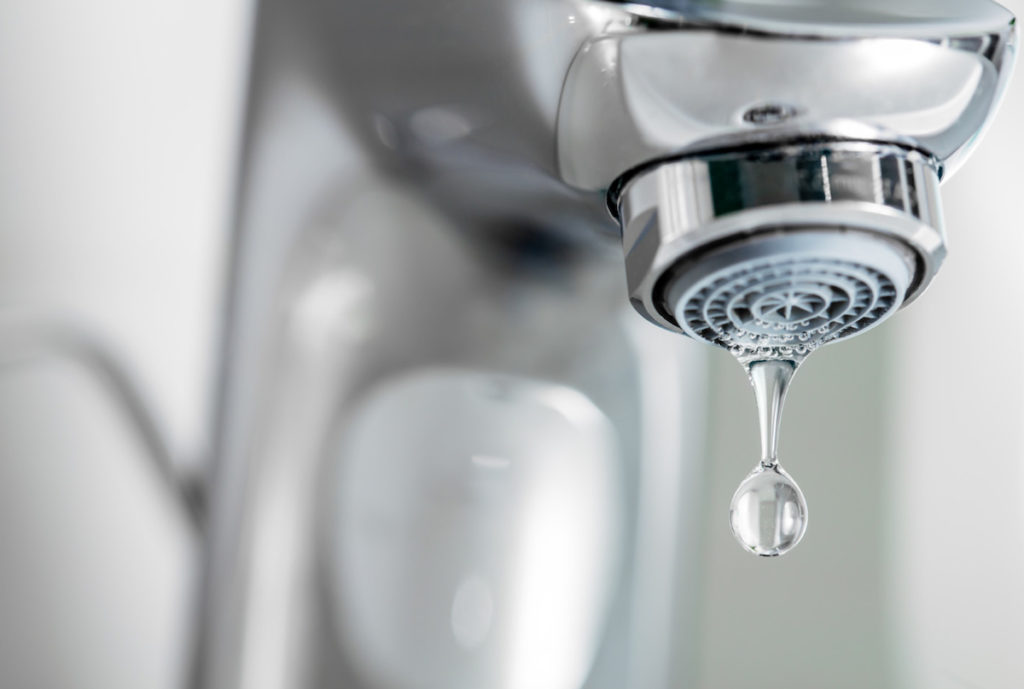Water gadgets that save you money With a little work, everyone can save water and…
We don’t notice how much we rely on water until something goes awry. From a faucet leak to a malfunctioning sprinkler geyser, there are a handful of unexpected curveballs that could be thrown your way. At SAWS, we want to minimize these frustrating occurrences and offer help when they inevitably do come up. Next time you’re dealing with a water mystery, we’ve got the solutions you need.
Phantom running water
Nobody is using the shower or the washing machine, so why do you hear the sound of running water in your home? You may have a leak—this is how you can know for sure.
- Turn off all flowing water in your home, including dishwasher, showers, and irrigation systems. Locate your water meter (most are located in the front of the home).
- Remove the cover and look for the small triangle or diamond on the water meter. If it’s spinning, that means water is still running in your home and you most likely have a leak.
- If the triangle is not spinning, then you’ll have to do some detective work on all the possibilities, including toilets, water softeners, and swimming pools. Shake down the usual water-wasting suspects with this guide.
- If you still can’t identify the culprit, call our Conservation Department at 210-704-SAVE (7283). You can also visit this resource section on our website.
Water leaks
So you did your home leak inspection and saw signs of a potential leak? No fear. Fixing some leaks is a relatively simple process that you can do on your own.
If the leak is at an indoor faucet, follow these steps:
- Turn off water under the sink or the customer shut-off valve.
- Remove the handle screw and the handle.
- Remove the packing and stem nuts.
- Unscrew the stem (by hand).
- Inspect stem threads for wear; replace if needed.
- Replace worn washers.
- Check seat for roughness. If so, redress or replace it.
- Put it all back together and turn on the water supply. Check for leaks.
If the leak is in an outdoor faucet, follow these steps:
- Turn off water using the shut-off valve located at your meter box.
- Using a wrench, remove the valve body at the large nut. Caution: These instructions are not to REPLACE the entire faucet—only to repair the valve.
- If necessary, use a screwdriver to remove the nut that holds the knob together and remove the knob. (This step depends on the type of outdoor faucet used.)
- Loosen joints on knob using penetrating oil (if needed).
- Use an adjustable wrench to unscrew nut and remove the faucet assembly from wall.
- Remove the assembly and inspect it for corrosion.
- If faucet assembly is stuck, soak the joints with penetrating oil for several hours. Once oil has loosened the faucet, hold stem with pliers and tap them with a hammer to pop the assembly off.
- Remove the screw holding the assembly together.
- Use the awl to remove the old washer. Replace the washer; cover with plumber’s grease and install the washer.
- Replace the assembly on the wall. Turn the water back on at the meter and check for leaks.
If it’s your toilet that’s leaking, then follow this guide to avoid wasting around 1,440 gallons every day.
Broken sprinkler heads
There’s nothing like stepping outside into your backyard for a breath of fresh air and seeing your sprinkler head gushing like Old Faithful. If this is happening, or perhaps the flow is uneven or the sprinkler keeps running after it’s not supposed to, check out this guide to help troubleshoot common sprinkler problems.
High or low water pressure
Water pressure within SAWS’ service area can range from 35-175 pounds. If you have a water softener or sprinkler system, the recommended maximum water pressure is 80 pounds. You can determine what your home’s water pressure is by using a gauge (can be purchased at most home improvement stores). If your pressure is too high, you can control it with a pressure-reducing valve. If your water pressure is too low, ask yourself these questions to discover the correct solution.
Plumbing backed up
If your sewer line gets clogged, your toilets and tubs will start backing up. As this is an urgent and more complicated issue, we recommend calling a licensed plumber to televise your line and clean any blockage on your side of the main. If you need assistance cleaning up the mess that resulted, call a remediation (cleaning) company. Lastly, call SAWS at 210-704-SAWS (7297) to report the back-up so we can dispatch a team to inspect our sewer main. If there is a blockage or collapsed pipe on the SAWS side of the main, we will clear and repair the line.
SAWS is here to help
The majority of home water repairs are easy fixes, but if you feel overwhelmed or don’t have the capability to solve your issue, please consult a licensed plumber. If you have a conservation question or would like to take advantage of a free irrigation consultation, give us a call at 210-704-7283 to schedule an appointment.


